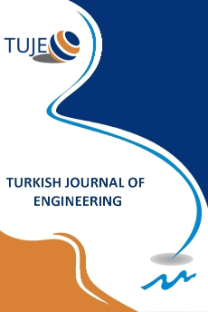THE CLASSICAL AES-LIKE CRYPTOLOGY VIA THE FIBONACCI POLYNOMIAL MATRIX
THE CLASSICAL AES-LIKE CRYPTOLOGY VIA THE FIBONACCI POLYNOMIAL MATRIX
___
- Uçar, S , Taş, N., and Özgür, N. (2019). "A New Application to Coding Theory via Fibonacci and Lucas Numbers". MSAEN 7: 62-70.
- Paar, C., and Pelzl, J. (2009). “Understanding cryptography: a textbook for students and practitioners.” Springer Science, Business Media.
- Koshy, T. (2018). “Fibonacci and Lucas Numbers with Applications.” Volume 1, John Wiley & Sons, New Jersey.
- Koshy, T. (2019). “Fibonacci and Lucas Numbers with Applications.” Volume 2, John Wiley & Sons, New Jersey.
- Stewart, I. (1990). “Galois theory.” Chapman and Hall/CRC.
- Klima, R. E., and Sigmon, N. P. (2012). “Cryptology: classical and modern with maplets.” Chapman and Hall/CRC.
- Daemen,, J., and Rijmen, V. (2003). "AES Proposal: Rijndael". National Institute of Standards and Technology. p. 1. Archived from the original on 5 March 2013. Retrieved 21 February 2013.
- Avaroğlu, E., Koyuncu, I., Özer, A. B., and Türk, M. (2015). “Hybrid pseudo-random number generator for cryptographic systems.” Nonlinear Dynamics, 82(1-2), 239-248.
- ISSN: 2587-1366
- Yayın Aralığı: 4
- Başlangıç: 2017
- Yayıncı: Mersin Uüniversitesi
Ademola Stanford OLUFEMİ, Olusegun Samson OSUNDARE, Isaiah Oluwadamilare ODEYEM, Mirwais KAKA
Orhan DİŞKAYA, ERDİNÇ AVAROĞLU, Hamza MENKEN
IMPORTANCE OF UNMANNED AERIAL VEHICLES (UAVs) IN THE DOCUMENTATION OF CULTURAL HERITAGE
Sibel CANAZ SEVGEN, Fevzi KARSLI
THREE-DIMENSIONAL EARTH MODELLING PERFORMANCE ANALYSIS OF GOKTURK-2 SATELLITE
Aycan Murat Marangoz, Umut Güneş Sefercik
AUTOMATIC GROUND EXTRACTION FOR URBAN AREAS FROM AIRBORNE LIDAR DATA
Sibel Canaz Sevgen, Fevzi Karsli
DESULPHURIZATION OF SYNGAS PRODUCED FROM BIOMASS USING DOLOMITE AS ADSORBENT
Ademola Stanford Olufemi, Olusegun Samson Osundare, Isaiah Oluwadamilare Odeyem, Mirwais Kaka
